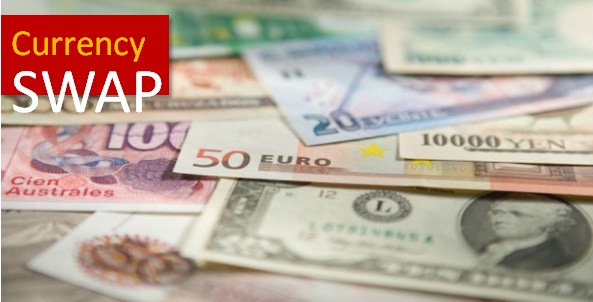Difference between Swap and Forward

Swap and Forwards are special financial instruments which fall in the derivatives category, taking their value from one or more underlying movements. Their overall use is to protect investors from volatility which can occur through changes in interest rates or in a currency when compared with another. They have the ability to hedge against risk and allow investors to speculate about future market patterns.
In a swap, two parties agree to simultaneously buy and sell a given amount of cash (flow) at a set date in the future. The benefit therefore, will depend on the type of financial instrument exchanged. The swap agreement will define the dates when the exchange will be made and how it will be calculated. This is usually determined by taking into account a random variable – interest rate, exchange rate, the price of the equity or commodity price.
In a forward contract, there is a non-standardized agreement between the two parties, promising the sale of the underlying asset at a set future date, along with the stated price. This price is already agreed upon in order to account for any unnecessary future changes. The forward price can come in the form of premium or discount, holding different implications for the purchasing party.
Swap contracts can take five generics, namely interest rate swaps, currency swaps, credit swaps, commodity swaps and equity swaps. Depending on the contract, swap rates will be quoted after a certain period, which results in a number of payments made later on.
As for forwards, there is an agreement between the two parties to make payments all at once in the future. In a swap, cash flows will be calculated by taking into account the nominal or face value of the instruments. This is usually referred to as the notional amount. In case of forwards or other derivatives, notional amount is not the basis for exchange. Moreover, one can also use collateral in swaps as opposed to forwards.
Instructions
-
1
Swaps
It is a derivative where parties agree to exchange one security in order to accommodate or limit exposure from market changes. They were initiated in 1981 when IBM and World Bank entered in a swap arrangement. They are usually traded over-the-counter and further exchanged on future markets.
Image courtesy: blog.simplilearn.com

-
2
Forwards
It is a non-standardized contract when one party, who is agreeing to buy the asset (underlying one) takes a long position, as oppose to the short position, held by the selling party, with the aim of being paid at a set future date.
Image courtesy: ecologikol.com








